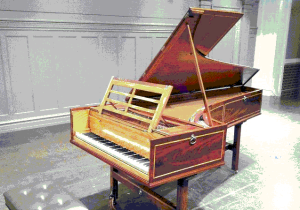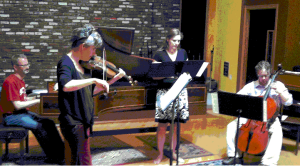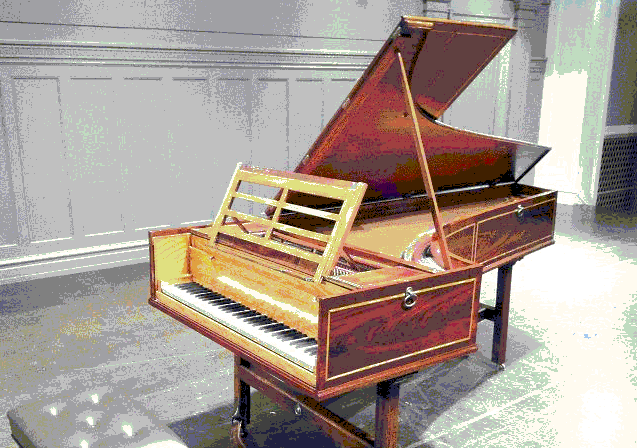By John Gordon Hill
At the end of August, 2013, four superb musicians gathered around a 1799 English fortepiano in a Seattle-area studio to record some little-known and rarely performed repertoire of Beethoven’s. Early keyboard virtuoso Byron Schenkman was joined by his longtime musical partner violinist Ingrid Matthews, rising cello star Nathan Whittaker, and the extraordinary soprano Linda Tsatsanis. The impetus for this project was the presence of a 1799 fortepiano built in London by the firm of Joseph Kirckman.

The instrument had long been in the possession of the University of Washington, and was acquired by John Gordon Hill in 2009. Hill subsequently had it restored to original playing condition by Tim Hamilton in Boston. In March of 2013, Schenkman, Matthews, and Whittaker performed Haydn Trios for the Kirckman’s inaugural public concert at Town Hall in Seattle.
The success of the Town Hall concert initiated talks of a recording project. As the artists considered what repertoire might best reflect the sound and provenance of the fortepiano, an idea emerged to cover Beethoven’s English Period. In 1803, the Scotsman, George Thompson, commissioned Beethoven to compose arrange-ments of Irish, Scottish, and Welsh folk tunes as a way of celebrating and preserving this music. Beethoven responded with over 100 songs that were then published by Preston. Tsatsanis and her fellow musicians selected ten of these songs to record. They run the gamut from charming, to rousing, to profoundly moving.
To round out the recording, four sets of variations on English themes were chosen. These featured Beethoven’s take on “God Save the King” and “Rule Brittania” among others. To pair with the Kirckman, Whittaker secured the use of a 1790 English cello by John Betts. There was speculation whether the Betts and the Kirckman might have encountered each other two centuries earlier in London.
Peter Nothnagle, classical recording engineer extraordinaire, was brought in from Iowa to produce the sessions. Tim Hamilton came from Boston to act as initial piano technician and tuner, and tuner/technician Devin Zimmer completed the sessions. To minimize environ-mental interruptions, the decision was made to record in a studio and the high-ceilinged large room at the aptly-named London Bridge Studio (LBS) was selected. LBS usually records the likes of Pearl Jam or Mary Lambert, and the engineers were fascinated by Nothnagle’s precise positioning and exceptional results with only two micro-phones. The room offered the warm intimacy that one might experience in a private salon at the turn of the 19th century.

Hundreds of takes were generated over the four days of the recording session. These are now being edited and mastered. The project has been picked up by Centaur Records and will be released as a CD later this year. Whittaker and Tsatsanis opened a successful Kickstarter cam-paign to fund the CD post-production and their video, which features some of the music, can be seen here: http://tinyurl.com/k4jg4wd
